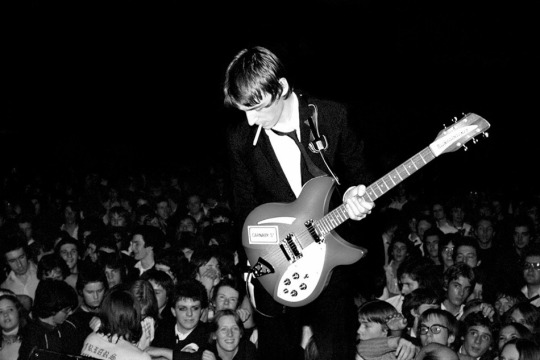#Sheila Weller
Text
List of all the books I’ve read
just wanted to keep a list of what I’ve read throughout my life (that I can remember)
Fiction:
“The Outsiders,” SE Hinton
“The Weirdo,” Theodore Taylor
“The Devil’s Arithmetic,” Jane Yolen
“Julie of the Wolves series,” Jean Craighead George
“Soft Rain,” Cornelia Cornelissen
“Island of the Blue Dolphins,” Scott O’Dell
“The Twilight series,” Stephanie Mayer
“To Kill a Mockingbird,” Harper Lee
“Gamer Girl,” Mari Mancusi
“Redwall / Mossflower / Mattimeo / Mariel of Redwall,” Brian Jacques
“1984,” and “Animal Farm,” George Orwell
“Killing Mr. Griffin,” Lois Duncan
“Huckleberry Finn,” Mark Twain
“Rainbow’s End,” Irene Hannon
“Cold Mountain,” Charles Frazier
“Between Shades of Gray,” Ruta Sepetys
“Great Short Works of Edgar Allan Poe,” Edgar Allen Poe
“Lord of the Flies,” William Golding
“The Great Gatsby,” F Scott Fitzgerald
“The Harry Potter series,” JK Rowling
“The Fault in Our Stars,” “Looking for Alaska,” and “Paper Towns,” John Green
“Thirteen Reasons Why,” Jay Asher
“The Hunger Games series,” Suzanne Collins
“The Perks of Being a Wallflower,” Stephen Chbosky
“Fifty Shades of Grey,” EL James
“Speak,” and “Wintergirls,” Laurie Halse Anderson
“The Handmaid’s Tale,” Margaret Atwood
“Mama Day,” Gloria Naylor
“Jane Eyre,” Charlotte Bronte
“Wide Sargasso Sea,” Jean Rhys
“The Haunting of Hill House,” Shirley Jackson
“The Chosen,” Chaim Potok
“Leaves of Grass,” Walt Whitman
“Till We Have Faces,” CS Lewis
“One Foot in Eden,” Ron Rash
“Jim the Boy,” Tony Earley
“The Vanishing Act of Esme Lennox,” Maggie O’Farrell
“A Land More Kind Than Home,” Wiley Cash
“A Parchment of Leaves,” Silas House
“Beowulf,” Seamus Heaney
“The Silence of the Lambs / Red Dragon / Hannibal / Hannibal Rinsing,” Thomas Harris
“Cry the Beloved Country,” Alan Paton
“Moby Dick,” Herman Melville
“The Hobbit / The Lord of the Rings trilogy / The Silmarillion,” JRR Tolkien
“Beren and Luthien,” JRR Tolkien, edited by Christopher Tolkien
“Children of Blood and Bone / Children of Virtue and Vengeance,” Tomi Adeyemi
“Soundless,” Richelle Mead
“The Girl with the Louding Voice,” Abi Dare
“A Song of Ice and Fire series / Fire and Blood,” GRR Martin
“A Separate Peace,” John Knowles
“The Bluest Eye,” and “Beloved,” Toni Morrison
“Brave New World,” Aldous Huxley
“The Giver / Gathering Blue / Messenger / Son,” Lois Lowry
“The Ivory Carver trilogy,” Sue Harrison
“The Grapes of Wrath,” and “Of Mice and Men,” John Steinbeck
“The God of Small Things,” Arundhati Roy
“Fahrenheit 451,” Ray Bradbury
“The Night Circus,” Erin Morgenstern
“Sunflower Dog,” Kevin Winchester
“The Catcher in the Rye,” JD Salinger
“The Absolutely True Diary of a Part-Time Indian,” Sherman Alexie
“The Good Girl,” Mary Kubica
“The Last Unicorn,” Peter S Beagle
“Slaughterhouse Five,” Kurt Vonnegut Jr
“The Joy Luck Club,” Amy Tan
“The Sworn Virgin,” Kristopher Dukes
“The Color Purple,” Alice Walker
“Their Eyes Were Watching God,” Zora Neale Hurston
“The Light Between Oceans,” ML Stedman
“Yellowface,” RF Kuang
“A Flicker in the Dark,” Stacy Willingham
“One Piece Novel: Ace’s Story,” Sho Hinata
Non-fiction:
“Anne Frank: Diary of a Young Girl,” Anne Frank
“Night,” Elie Wiesel
“Invisible Sisters,” Jessica Handler
“I Am Malala,” Malala Yousafzai
“The Interesting Narrative,” Olaudah Equiano
“The Immortal Life of Henrietta Lacks,” Rebecca Skloot
“Incidents in the Life of a Slave Girl,” Harriet Jacobs
“The Princess Diarist,” Carrie Fisher
“Adulting: How to Become a Grown Up in 468 Easy(ish) Steps,” Kelly Williams Brown
“How to Win Friends and Influence People,” Dale Carnegie
“Carrie Fisher: a Life on the Edge,” Sheila Weller
“Make ‘Em Laugh,” Debbie Reynolds and Dorian Hannaway
“How to be an Anti-Racist,” Ibram X Kendi
“Maus,” Art Spiegelman
“I Know Why the Caged Bird Sings,” Maya Angelou
“Wise Gals: the Spies Who Built the CIA and Changed the Future of Espionage,” Nathalia Holt
“Persepolis,” and “Persepolis II,” Marjane Satrapi
“How to Write a Novel,” Manuel Komroff
“The Nazi Genocide of the Roma,” Anton Weiss-Wendt
“Children of the Flames: Dr. Josef Mengele and the Untold Story of the Twins of Auschwitz,” Lucette Matalon Lagnado and Sheila Cohn Dekel
#books#some of these I read for school assignments and some I read of my own volition#some I read when I was a young teenager many years ago and some I read just this past month#somewhat in order of which I read them#some of these I have read more than once#for the record I work at a library which is how I'm able to access so many books#support your local library#also just because I read these books doesn't necessarily mean that I would recommend all of them to just anyone#don't come at me for reading 'problematic' books please#I was an english major in college and didn't get to choose a lot of what I read#but even the ones I was forced to read I'm glad that I read them#I don't really regret reading any of these; even the one's that I didn't like#I will add to the list whenever I finish a book#annemariereads
3 notes
·
View notes
Text
tagged by @hauntedwoman 🖤🕯️
last read: carrie fisher - a life on the edge by sheila weller
current read: atonement by ian ewan
next read: tropic of capricorn by henry miller
1 note
·
View note
Text
Paul Weller. Photo by Sheila Rock
Paul Weller. Photo by Sheila Rock
Paul Weller. Photo by Sheila Rock
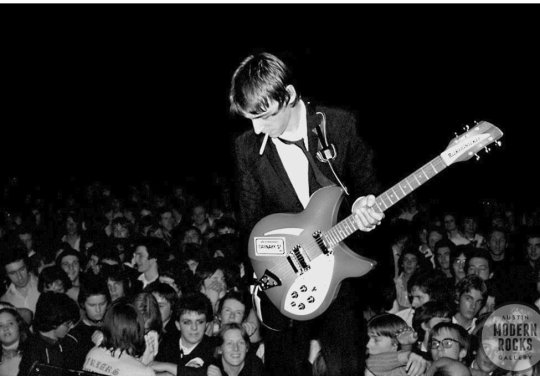
View On WordPress
0 notes
Photo
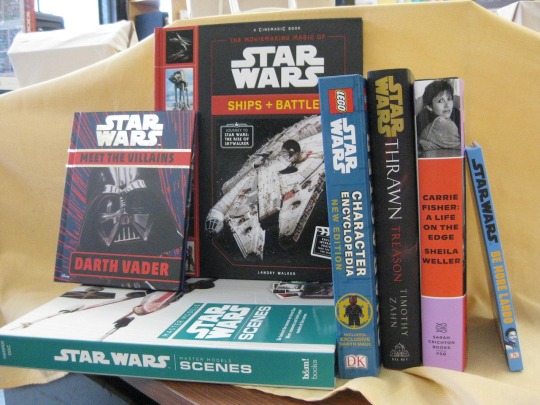
May the Force be with you, Vancouver!
#May the Fourth#Star Wars#holidays#bookstores#indie bookstores#Meet the Villains: Darth Vader#Ships + Battles#Landry Walker#Star Wars: Scenes#Lego Star Wars Character Encyclopedia#Thrawn: Treason#Timothy Zahn#Carrie Fisher: a Life on the Edge#Sheila Weller#Be More Lando
8 notes
·
View notes
Text
Interview with author of “Carrie Fisher: A Life on the Edge”
Sheila Weller’s biography of Carrie comes out next month. Here’s an excerpt from an interview with her. Frustratingly, it devotes only a small amount of time to Carrie. I cut out all the rest.
----
Between Girls and Carrie Fisher: A Life On the Edge, I actually wrote another book, The News Sorority: Diane Sawyer, Katie Couric, Christiane Amanpour – and the Triumph of Women in TV News.
<snip>
So, why from these two threesome books to Carrie Fisher?
The facile answer might be something like this: She is so fascinatingly complex, she is one woman with even more than three women inside of her: (1) the prolific creative (actress, author, script doctor, one-woman-show writer/performer); (2) the bearer of the burden of mental and behavioral challenges (bipolar disorder and an inherited propensity to drug addiction), and (3) everyone in Hollywood-and-beyond’s charismatic, witty, wise and generous best friend. Oh, and she’s also Hollywood Royalty — let’s not forget that!
I loved her 1987 work of “faction” (her word for reality-based fiction), Postcards from the Edge. I found it revolutionary as women’s sophisticated truth telling. And I had been aware of the social significance of the Carrie-Penny parties. As well, I, too, had grown up in the Beverly Hills and Hollywood that had been her home, so I knew that world. My uncle owned the nightclub, Ciro’s, into which her mother, Debbie Reynolds, as a teenage starlet – along with Debbie’s friend “Janey Powell” – used to charm her way in order to shed her El Paso self and feel glamorous and worldly. My mother was a movie magazine writer and editor; she wrote articles on Debbie, and once I drove with her the three block distance from our Beverly Hills Flats house to Debbie and Eddie’s to deliver an article she had written to the lovely Debbie (I still have her image before my eyes) for her approval. My mother not only wrote Debbie-and-Eddie stories, but after the grand scandal, she wrote Debbie-and-Eddie-and-Elizabeth Taylor stories. (And then, later: many, many Elizabeth and her husbands stories.) Taylor’s mother lived right up our street.
On top of that, my family had its own – not un-public – version of a Debbie-Eddie-and-Liz scandal, with a beautiful woman breaking up a marriage. There was violence involved, and my mother had the kind of serious nervous breakdown, as they used to call it, that occasioned ECT, something that Carrie would later have. (I wrote about my family and that whole dramatic saga in my 2003 family memoir, Dancing At Ciro’s.)
So, bouncing around in my past was a familiarity with Carrie’s early life. When she died, in December 2016, the fact that she – bursting with honesty and wit; a healing stand-in for so many women who had age and weight issues and messy or atypical families but were embarrassed by them – was a feminist heroine hiding in plain sight became thrillingly clear. When, at the January 2017 Women’s Marches, Princess Leia and Carrie posters were held aloft by countless marchers, some not even born when the first Star Wars opened, everything came together and I knew she deserved a biography. I wrote a proposal and was lucky to have gotten a contract with the wonderful Sarah Crichton.
If you could point to one lesson you learned from researching Fisher’s life, what would it be? Your #1 takeaway?
Carrie was famously, stupendously honest about the parts of one’s life that most people hide. Sometimes, perhaps, she used that honesty in place of change, but other times she used it to inspire or nudge – or even half-shame – herself to change. Secondly, she persevered. Be killingly honest and persevere: that’s a double takeaway, I guess. Bipolar disorder is, as she put it, like living in a “war zone.” The hypomania (mild mania) makes one very productive, but the depression can be horrendous. Carrie worked through just about everything. Her output was astonishing, given the perilous, ever-ping-ponging emotional and mental state she lived in. Those of us who don’t have serious mood disorders can take inspiration from how much she did while challenged. I know I did.
What was the hardest thing about writing this book for you?
Two things: 1, getting people to talk. Some friends of Carrie’s held their memories close to their chests. I didn’t pester them if they wanted to stay private. But a remarkable number of people who knew her, in her expansive life (some who shared moments, some who shared deep friendships) did talk. And, 2, balancing honesty about some of her difficult moments with sympathy. Addiction – especially when one is young and came from a pampered environment, or any age and ashamed – can easily lead to unpleasant encounters and broken friendships and defensiveness that can seem mean. I wrote about those occasions, but after every bad encounter, I tried to explain the reasoning behind the behavior or in some other way say something positive. She deserved sympathy. And people outside of the industry: perspicacious fans – especially women – loved her. Loved her.
3 notes
·
View notes
Text
Five things I learned today about writing nonfiction
I’m currently enjoying my first full day of my MFA residency. The faculty and fellow students have been splendiferous. Our first craft talk was by bestselling author Sheila Weller, centralizing on nonfiction and biographies.
Here are five things I learned:
1) Don't disclose the trauma of others if they ask you not to.
2) Maintain empathy for the subject. Present them with sympathy on a paragraph-to-paragraph basis.
3) Learn how to balance positive and negative information in order to paint a complex portrait of an individual. If you make an especially negative statement or assertion, counterbalance it with something positive. Resist the urge to vilify.
4) On that note, when writing memoirs, be hard on yourself. Readers will recognize when you're lionizing yourself and demonizing others. You may feel as though you're making yourself unlikable, but it will make readers relate to you more.
5) Branding oneself is important. As writers, it is important to also be entrepreneurs, especially in today's society. Market yourself as much as your books.
All in all, an amazing talk. I absolutely can't wait for the next one, and I’ll keep you all posted!
Happy writing! <3
73 notes
·
View notes
Link
Carrie Fisher: A Life on the Edge by Sheila Weller https://amzn.to/33JGnlo
0 notes
Quote
In hindsight, the last three years of the 1960s were like some self-wrought mini-Messianic Age plunked in the middle of the twentieth century. Hubristic prophets spouted melodramatic rhetoric in contemporary version of Temple squares (the campus, the TV screen, the FM radio, the rock concert, the newspaper headlines); believers found revelation in holy texts (Weather Underground manifestos, acid visions, Dylan or Beatles lyrics); witnesses watched the heavens heave both frogs (dollar bills fluttering from Wall Street balconies; the naming of a pig as a candidate for the Democratic nomination; Jimi Hendrix immolating his guitar) and thunder (the Vietnam War dead, the political assassinations).
Carly Chapters; Girls Like Us; Sheila Weller
2 notes
·
View notes
Photo

Paul Weller and The Jam live at Friars, Aylesbury, UK, 1978
Photo : Sheila Rock
243 notes
·
View notes
Photo



Rooster Teeth Mortal Kombat Championship Part 7!
Pyrrha is just happy to be in the competition, RVB team’s are rubbing their victory’s, and Cammie is frustrated because she can’t get online.
Pyrrha: *Twirls rifle as it transforms into a spear*
Sarge: I should warn you young lady that taking a spear into a gun fight is unwise.
Pyrrha: That’s alright, I can change it back If I need to.
Sarge: *Cocks shotgun* I’m sure you can, but I doubt it would stop a shotgun blast to the face!
Lopez: *Walks in attaching his head to his body*
Yasamin: They sent a tin man after me?
Lopez: *In Spanish* I know, they should have sent the coffee maker instead with the way you fight.
Yasamin: *Takes fighting stance* Why do I feel like you have insulted me?
Kazu: *Flips in and lands*
Yang: Was that meant to impress me?
Kazu: You think you could do better?
Yang: *Cocks shotgun wrists* I’ve friends that can jump across an entire canyon, so yeah.
Ozpin: *Walks in looking at pocket watch before putting it back in pocket*
Tucker: I’m going to be honest, this hardly seems like a fair fight.
Ozpin: I applaud your honor, but I don’t ask for special treatment from you.
Tucker: *Draws energy sword* No I mean I’m a space soldier with an energy blade and power armor, and you’re an old man with a walking stick.
Roman: *Slow walks in twirling cane*
Julian: You look like you’re straight out of Disney movie.
Roman: Hopefully as the bad guy, otherwise I’d be horribly offended.
Julian: *Hologram flickers* I was going to say comic relief, but we can settle on bad guy for now.
US: *Enters with coin flipping*
Salem: You can use magic as well it seems.
US: Oh sure lady, I’m a regular wizard of OZ
Salem: *Spreads arms* Poor choice of words.
Sheila: *Rolls on to the stage*
Cammie: How da hell is this fair?!?!
Sheila: The rules state matches are 1v1, so I am not violating the rules.
Cammie: *Nugget hops on Cammie’s shoulder* I think they’d say an unarmed girl fighting a damn tank isn’t exactly fair!
Ren: *Guns firing through window with Ren crashing through it*
Caboose: You know I don’t feel like fighting anymore.
Ren: And why is that?
Caboose: *Pulls out a can of soup* Well now there’s glass all over the floor and I don’t want to step on it and hurt my foot since I need them for walking and stuff.
Nemesis: *Nanotech cloud appears and forms Nemesis*
Grif: All I’ll need to defeat you is a vacuum cleaner.
Nemesis: You dare mooooockoockcock me?
Grif: *Facepalms* Dude, you’re basically a cloud with an attitude. A gust of wind could defeat you.
Nora: *Smashes through nearby wall with hammer*
Donut: Oh my god! I love your outfit!
Nora: Thanks! It’s nice to find someone else wearing pink.
Donut: *Pulls out frag grenade* It’s a light red.
Kaikaina: *Kicks over stacked crates, before tripping and falling on face*
Kazu: Why do I feel like you are not a threat?
Kaikaina: Get between me and happy hour and I’ll gouge your eyes out.
Kazu: *cracks knuckles* Slightly more threatening now.
Pyrrha: *Twirls rifle as it transforms into a spear*
Church: Going to take it you’re some kind of badass?
Pyrrha: I am pretty strong, but I’m sure you and your team are just as strong.
Church: *Pulls out the sniper rifle* Kid, I’m sure you could kill half my team before they even cared what is going on.
Rufus: *Walks in handing data slates to Caliban to hold*
Church: I hear you’re the guy who puts minds in machines.
Rufus: Yes, yes; cutting edge science I can assure you.
Church: *Pulls out sniper rifle* You must be reeeeeeeeeeeally behind in the times, I’ve been doing that for years.
Penny: *Two swords embed in the ground followed by Penny*
Caboose: So the swords are in your stomach?
Penny: Well, technically they are stored in my stomach compartment.
Caboose: *Pulls out a spork* So when you get a tummy ache do you see a blacksmith or a mechanic?
#rwby#rwby ozpin#penny polendina#michael j caboose#rufus weller#leonard l. church#pyrrha nikos#kaikaina grif#kazu iida#nora valkyrie#franklin delano donut#dexter grif#nemesis#sarge#gen:lock#rooster teeth#mortal kombat#red vs blue#lie ren#sheila#cammie maccloud#The Great Union of the Fourth Turning Republics#lopez the heavy#Roman torchwick#salem#julian chase#lavernius tucker#yang xiao long#yasamin madrani#genlock
113 notes
·
View notes
Photo

Paul Weller 1977-78 by Sheila Rock
291 notes
·
View notes
Photo
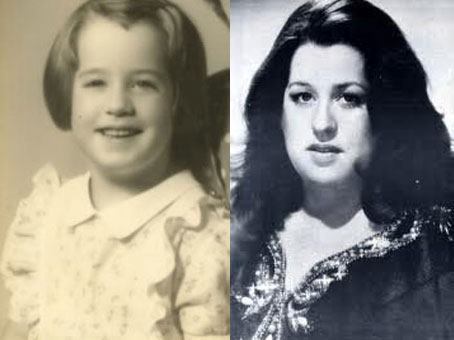
Ellen Naomi Cohen was born on September 19, 1941.
She was mocked by people who didn’t know her heart, she was teased by supposed friends. Even after her death, the cruel joke was that she choked on a ham sandwich.
All this because of her weight.
The jokes hurt her, as it does many people who are called “fat,” who are ridiculed for the way they look, but she hid her pain well, as do many.
In high school, she adopted the name “Cass,” and, some time later, she would assume the surname “Elliot” in memory of a friend who had died.
According to a 2019 article by writer, Sheila Weller, “Cass—Ellen Naomi Cohen—was a middle-class Jewish girl from Baltimore who left high school six months before graduation to go to New York and try Broadway. She lost the role of Mrs. Marmelstein in ‘I Can Get It For You Wholesale’ to a budding young Jewish singer-actress who did her share to establish the rule that you didn’t have to be classically beautiful to be a star: Barbra Streisand. Cass then got a job as a coat check girl at a Manhattan nightclub, the Bitter End, singing and trying to get random agents’ attention, as she juggled hangers and quarters as tips.”
Cass Elliot had a wonderful, soothing voice, she had a wonderful personality, a beautiful soul, but the story is that initially not even John Phillips wanted her as part of his new group, which would become the Mamas and Papas. According to insiders, Phillips thought she was too fat and didn’t fit the image of the group. It was only when the group realized that she had a beautiful voice which actually made the group better that she was allowed more opportunities to sing.
When she was finally featured, she had to make up a story that she had a terrible voice until a pipe fell on her head, which somehow made her voice better.
Even after that, Elliot’s weight continued to be a source for jokes.
In one of the Mamas and the Papas biggest hits, “Creeque Alley”, Elliot had to join the chorus, singing, “And no one’s getting fat except Mama Cass!”
After she left the group, she tried to get away from the name “Mama” Cass to no avail.
“My mother was The Little Engine That Could,” her daughter Owen Elliot-Kugell told Weller. “Weight shaming was something she dealt with all her life. She was constantly insulted and hurt by people calling or thinking her fat. But she never talked about her pain, and when she performed, she hid that pain. But I know — I could tell—that it bothered her. As a child she was teased as a fatty. Her weight was something she bore the scars of for the rest of her life, be it failed auditions for Broadway shows or lonely nights after The Mamas and The Papas’ performances at Carnegie Hall or the Hollywood Bowl, coming home alone when everyone else had a partner.”
She once said, “I’ve been fat since I was seven and being fat sets you apart.”
“For others, that might have been a handicap but Cass turned it into a strength,” according to The Guardian. “She opened the door for others like Janis Joplin and Grace Slick of Jefferson Airplane,” says DJ Annie Nightingale. “I adored her voice, you couldn’t help but like her and she helped establish a genre of independent women.”
“Cass’s impact on 60s teenagers with weight problems was significant,” said The Guardian. Nancy Roberts, founder member of the Spare Tyre Theatre Company, a group inspired by Susie Orbach’s Fat is a Feminist Issue, explains: “She was this wonderful sexy role model and inspiration who made it less of an incriminating burden to be fat.”
“Aside from breaking the weight-shaming stigma and rising as an improbable female icon, Cass was other things young women weren’t allowed to be then but can be now — a proud single-mother-by-choice and a working mother who supported her child alone,” according to Weller.
“At 25, Cass knew she wanted to be a solo mother — a bold choice at the time, even in bohemian circles,” according to NexTribe.
“She wanted me more than anything else in the world — she told people that,” her daughter said.
But, even with all her personal and musical triumphs and outwardly confidence, Elliot constantly felt the brunt of the fat jokes and the pressure to be slim.
“She said she’d never go on stage because Michelle was beautiful and she wasn’t,” says John Phillips, one of the Papas. She was persuaded to change her mind but no one stopped her trying dangerous diets.
Elliot tried desperately to lose weight, once going on a six-month long crash diet, losing 100 of her 300 pounds. This would lead to a stomach ulcer and throat problems, which was treated by drinking milk and cream, leading her to regain much of her weight back.
At age 32, Elliot would die in her sleep. Immediately, there were rumors that she either died because of drugs or that she died while eating a ham sandwich.
Frank Zappa would even reference the sandwich in his song, “We’re Turning Again” with the lyrics, “We can visit Big Mama, we can whap her on the back, while she eats her sandwich!”
As recent as 2007, even Snopes had to post an entry and dispute the ham sandwich myth of her death.
Owen Elliot was seven when her mother died. “It’s been hard for my family with the sandwich rumour,” she says. “One last slap against the fat lady. People seem to think it’s funny. What’s so darn funny?”
According to reports, there was no evidence to support the choking theory. The official autopsy revealed she had little to eat during her final hours. “There was left-sided heart failure,” wrote pathologist Keith Simpson. “She had a heart attack which developed rapidly.”
Heart failure.
Cass Elliot not only had a beautiful voice, but she also had a beautiful heart which few people got to see.
Anthony Kiedis of Red Hot Chili Peppers cited The Mamas & the Papas, and especially Elliot, as an influence, in an interview for Rolling Stone, saying, “There have been times when I’ve been very down and out in my life, and the sound of her voice has sort of given me a reason to want to carry on.”
“She was a one-woman triumph against adversity; she was ahead of her time; women now are finally doing what she did 50 years ago,” says her daughter. “I look back on her and realize that, just by example, she taught me, and others, not to accept it when someone says you can’t do something.”
“I’m proud to be my mother’s daughter,” says Owen. “When I’m having a tough day, for whatever reason, I think of all the ‘you can’t be this; you can’t do thats’ that my mother heard but ignored or conquered. She was a hero to me.”
youtube
The Jon S. Randal Peace Page
Ellen Naomi Cohen was born in Baltimore, Maryland, on September 19, 1941, the daughter of Bess (née Levine; 1915–1994) and Philip Cohen (died 1962) All four of her grandparents were Russian Jewish immigrants.
55 notes
·
View notes
Text




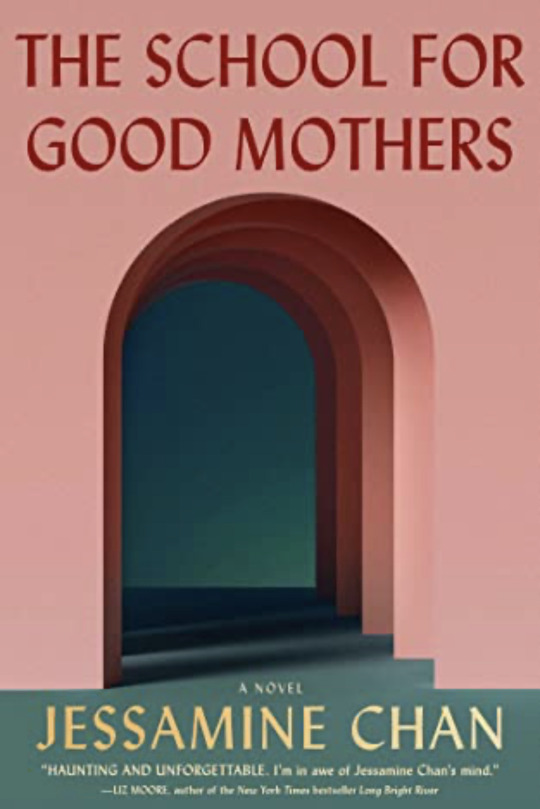

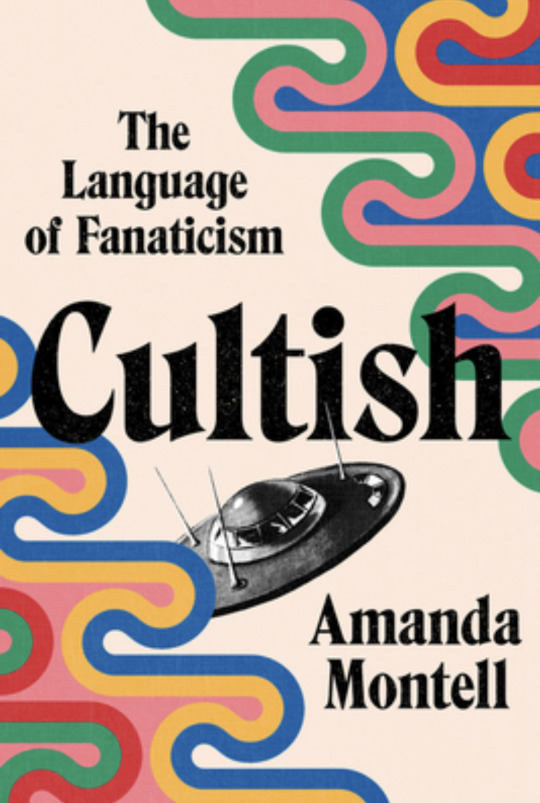


i was tagged by @violaeadde to do a 9 books you plan on reading in 2021 challenge :]
1. milk fed by melissa broder 2. the virgin suicides by jeffrey eugenides 3. perfume by patrick suskind 4. carrie fisher: a life on the edge by sheila weller 5. the school for good mothers by jessamine chan 6. black swans by eve babitz 7. cultish by amanda montell 8. on earth we’re briefly gorgeous by ocean vuong 9. homesick for another world by ottessa moshfegh
my gr reading challenge for ‘22 is 100 books 😪😪😪 gots lotsa of reading to do. i snagged a first edition of tsfgm and im super excited to start that once i clear my cr out (:
oomfs feel free to use this idk who to tag!
12 notes
·
View notes
Photo
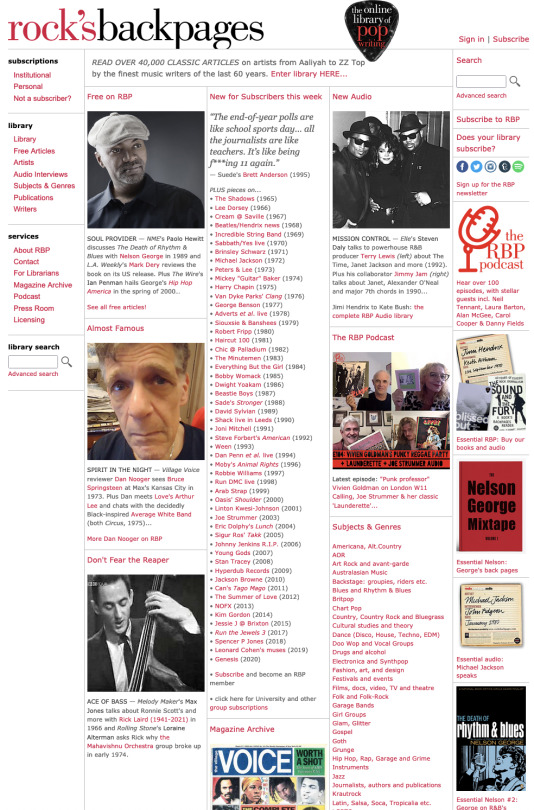
This week on Rock’s Backpages
GREETINGS to all festive spirits and lone groovers out there. On Rock's Backpages this week we spotlight not one but two great American music writers...
Nelson George, our next podcast guest, talks to NME's Paolo Hewitt about his Death Of Rhythm & Blues in 1989, plus we feature Mark Dery's review of that seminal book and Ian Penman's review of 1998's Hip Hop America. Meanwhile Village Voice veteran Dan Nooger sees Bruce Springsteen at Max's Kansas City in January 1973... and interviews Arthur Lee and the Average White Band for Circus in 1975. We also say farewell to Mahavishnu Orchestra bassist Rick Laird with pieces from 1966 and 1974.
For RBP subscribers there are audio interviews with powerhouse R&B production duo Jimmy Jam & Terry Lewis, firm faves of Mr. George's (you'll hear him discussing them in Episode 105 of the RBP podcast). There are also dozens of additions to our library of 45,000+ articles & 700+ audio interviews, including L.A. Weekly's Byron Coley on The Minutemen (1983), Vanity Fair's Sheila Weller looking back on Haight-Ashbury's Summer of Love and great pieces about...
• Lee Dorsey (1966)
• Brinsley Schwarz (1971)
• Harry Chapin (1975)
• Haircut 100 (1981)
• Bobby Womack (1985)
• Ween (1993)
... and (from 2014) Kim Gordon.
Listen to the latest episode of our acclaimed podcast, in which Vivien Goldman talks wonderfully about Joe Strummer, postpunk feminism and the late '70s Ladbroke Grove scene.
"When it has to do with my life, my life,
I wanna be the one in control..."
2 notes
·
View notes
Text
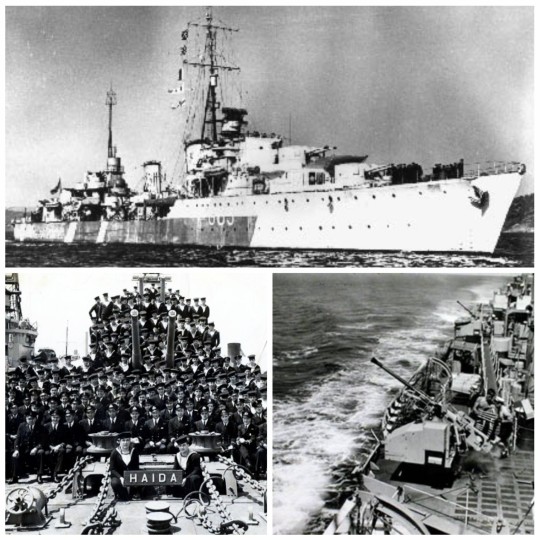
• HMCS Haida
HMCS Haida is a Tribal-class destroyer that served in the Royal Canadian Navy (RCN) from 1943 to 1963, participating in World War II and the Korean War. She was named for the Haida people.
The Tribals were designed to fight heavily armed destroyers of other navies, such as the Japanese Fubuki class. Canada chose the design based on its armament, with the size and power of the Tribal class allowing them to act more like small cruisers than as fleet destroyers. Haida was among the first batch of Tribal-class destroyers ordered by the RCN in 1940–1941. They were ordered with modified ventilation and heating systems for North Atlantic winter service. Haida's design was modified after deficiencies were noted in the lead ship of the Canadian Tribals, HMCS Iroquois. Haida, as one of the British-built Tribal-class destroyers, was 335 feet 6 inches (102.26 m) long between perpendiculars and 377 feet (115 m) long overall with a beam of 36 feet 6 inches (11.13 m) and a draught of 13 feet (4.0 m). As built, the destroyer displaced 1,927 long tons (1,958 t) standard and 2,745 long tons (2,789 t) at deep load. Haida had a complement of 14 officers and 245 ratings. As built, Haida was fitted with six quick-firing 4.7-inch (119 mm) Mk XII guns placed in three twin turrets. For secondary anti-aircraft armament, the destroyer was equipped with four single-mounted 2-pounder "pom-pom" guns. The vessel was also fitted with four 21-inch (533 mm) torpedo tubes for Mk IX torpedoes.
Haida's keel was laid down by Vickers-Armstrongs, Ltd. at their shipyard in Newcastle-upon-Tyne on September 29th, 1941. The destroyer was launched on August 25th, 1942 and commissioned into RCN service on August 30th, 1943. She underwent workups under her first commanding officer, H.G. DeWolf before reporting to the British Home Fleet at Scapa Flow in October 1943. After commissioning Haida was assigned to the Royal Navy's Home Fleet. On November 28th Haida was among the destroyer escort for the Russian convoy RA 54B, protecting it until it reached Loch Ewe on December 9th without loss. The convoy JW 55B sailed from Loch Ewe for Russia on December 20th. Haida was a member of its ocean escort. The German battleship Scharnhorst was deployed to intercept the convoy. While the cruisers escorting the convoy kept the German vessel at bay, Haida and the other escorting destroyers shepherded the convoy away from danger until the German battleship was sunk by a British force. Haida joined the escort of RA 55B on the return journey to the UK which sailed from Kola Inlet on December 31st and arrived on January 8th, 1944. On January 10th, 1944, she was reassigned to the 10th Destroyer Flotilla at Plymouth and took part in the Operation Tunnel and Operation Hostile sweeps in the Bay of Biscay and along the French coast of the English Channel.
By April, Haida had sailed on nineteen of the Operation Tunnel/Hostile missions. Haida continued the Operation Hostile sorties in company of sister ship Huron during the weeks leading up to Operation Overlord. The 10th Destroyer Flotilla were part of the covering force for surface attacks at the western entrance of the English Channel during the invasion of Normandy. On June 9th, Haida was part of Task Force 26 which engaged the German 8th Destroyer Flotilla, comprising Z32, Z24, ZH1 and T24 northwest of the Île de Bas. Following the fall of Cherboug, the German E-boats were transferred to Le Havre, freeing up the 10th Flotilla. The flotilla was then given the dual role of covering Allied motor torpedo boat flotillas and search and sink missions against German shipping along the French coast. On June 24th, while on patrol in the English Channel off Land's End, investigated a Liberator bomber dropping depth charges on a target. Haida and the British destroyer Eskimo began their own depth charge attacks after being informed that a submarine had been spotted. After several attacks, the submarine surfaced and attempted to run. Haida and Eskimo began to fire with all their guns and sank U-971. Haida rescued six survivors of the sunken submarine. On August 5th, Haida was part of a force engaged in an Operation Kinetic sweep. The force attacked a German convoy north of the Île de Yeu and sank the minesweepers M 263 and M 486, the patrol boat V 414 and the coastal launch Otto. During the battle a shell exploded in one of Haida's turrets and started a fire, killing two and injuring eight, knocking the turret out of action. Staying in the line of battle, the destroyers were engaged by shore batteries when they attempted to take on a second convoy and were forced to withdraw without doing much damage to the German merchant vessels.
Haida departed Western Europe on September 22nd for Halifax, Nova Scotia, arriving on September 29th. The destroyer returned to Scapa Flow in mid-January 1945 after refitting to receive new radar. In March Haida escorted aircraft carriers in minelaying operations off Granesund, Norway and assisted in attacks on shipping off Trondheim from March 24th-28th. On April 7th, Haida escorted seven anti-submarine warfare vessels from Greenock, Scotland destined for Soviet use at Vaenga, on the Kola Inlet. Haida experienced one of the last RCN engagements of the Second World War when she escorted convoy RA 66 from Vaenga from April 29th to May 2nd. The convoy was attacked in transit and Haida and Huron received near-misses from torpedoes fired by U-boats. In the skirmish, two U-boats were sunk, along with the frigate Goodall, and the convoy escaped in a snowstorm. Haida and Huron returned to Scapa Flow on 6 May and were assigned to relief operations at Trondheimsfjord, Norway on May 17th. Haida, along with Huron and Iroquois, left for Halifax in June to refit as part of Canada's contribution to Operation Downfall. They arrived on June 10th and Haida started a tropicalization refit but it was suspended after the surrender of Japan later that summer.
After the war, Haida was in inactive reserve for approximately one year but was prepared for reactivation in 1947 and underwent a refit for updated armament and sensors. This involved replacing the main armament, with the 4.7-inch guns removed and two twin Mk XVI 4-inch gun mounts installed forward and a twin 3-inch (76 mm)/50 calibre gun mount installed aft. Haida and her sister ship HMCS Nootka participated in exercises between the RCN's Atlantic Fleet and the United States Navy and Royal Navy over the next several years and were the first RCN ships to penetrate Hudson Bay in Fall 1948. Haida was involved in assisting during the grounding of the aircraft carrier HMCS Magnificent off Port Mouton, Nova Scotia on June 4th, 1949. In November 1949, Haida rescued the 18 members of the crew of a United States Air Force B-29 bomber that crashed in the Atlantic Ocean. The opening of the Korean War on June 25th, 1950 saw Haida once again activated for war duty. She was converted to a destroyer escort and began refit in July 1950 which saw various new armaments and sensors and communications systems. Following the Korean operations, Haida embarked on Cold War anti-submarine warfare duties with other NATO units in the North Atlantic and West Indies.
In 2002, at the urging of Hamilton, Ontario MP Sheila Copps, Parks Canada purchased Haida from the provincial government and towed her (with great difficulty) from her Ontario Place dock to a shipyard at Port Weller for a $5 million refit to her hull. She was taken to a new home on the Hamilton waterfront and arrived to an 11-gun salute from 31 Royal Canadian Sea Cadet Corps Lion and her 12-pounder naval field gun on August 30th, 2003, the 60th anniversary of her commissioning into the RCN.
#ww2#world war 2#world war ii#second world war#royal canadian navy#canadian history#history#british history#long post#british commonwealth#wwii
28 notes
·
View notes
